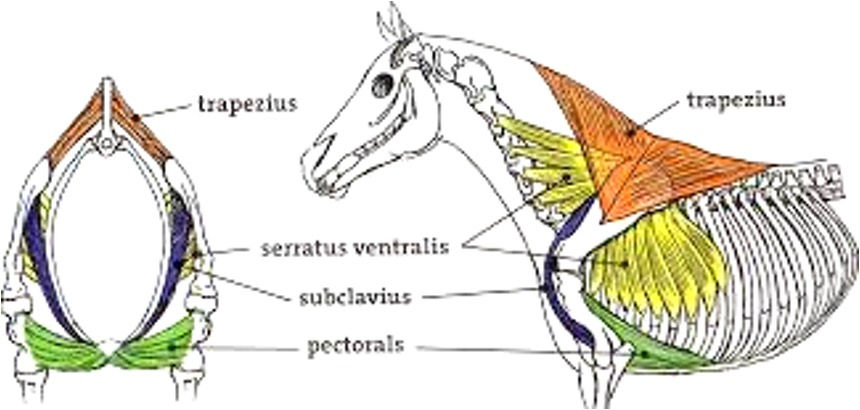How Horses Carry a Rider, and Why It's Important
Horses movement starts with energy being sent to the hind end, and the forward swing of a hind leg. (See posts about strides and engagement.)
The reality is, no horse can move exactly the same under a rider as they do while moving free. They have to account for the weight and balance of the rider. Riders are sitting directly on the chain of muscles that run along the horses top line, and therefore greatly influence the usage of these muscles.
In order to move efficiently and safely under saddle, a horse must engage their abdominals, and therefor reach underneath their barrel with the hind legs, flexing their back, and balancing this out with a slightly lower and engaged head and neck.


This is a reason (among many!) to make sure you have adequate saddle fit. If the saddle is putting undue pressure on any part of the spine, scapula or muscles surrounding them, the horse will automatically shy away from that pressure or pinch, therefore changing their posture and movement to compensate. Eventually, this can change their behavior, willingness, and even overall muscular development.

How to Check Your Horse's Back
Obvious:
- Sinking the back down, flattening the croup
- Pinned ears
- Shifting away from the pressure
- Stomping or kicking
Subtle:
- Tightening of the muzzle
- Twitching of the skin (as if theres a fly)
- Holding their breath
- Widening of the eyes
- Guarding of the muscles (tightening up as you apply pressure)


Comments
Post a Comment